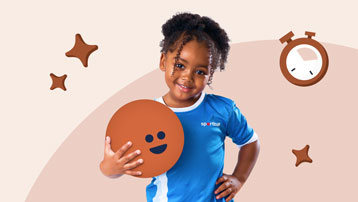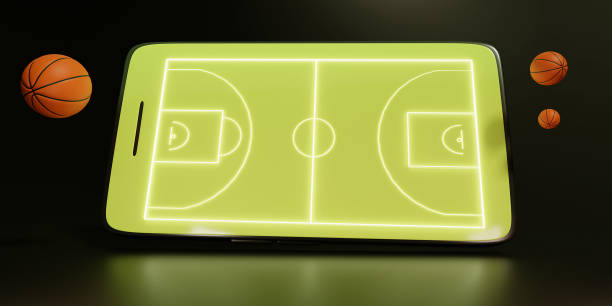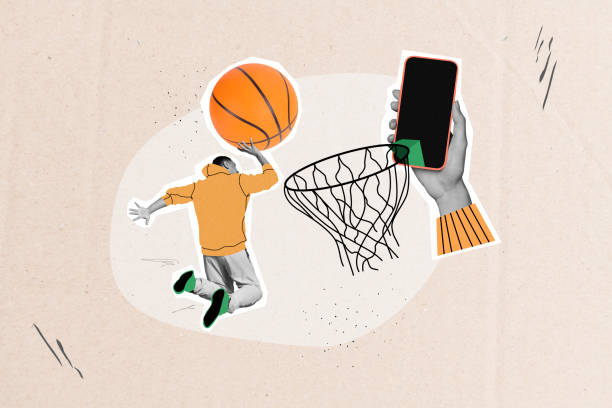Basketball for kids 6 years old is an exciting way to introduce young children to the sport, fostering physical development, teamwork, and a love for active play. At this age, the focus is on fun, skill-building, and creating a positive experience.
Whether your child is joining a local youth summer basketball league or just shooting hoops in the backyard, the right tools can help shape a great experience. One increasingly popular option? The basketball calculator—a digital or app-based tool designed to track performance and support training.
Understanding Basketball for 6-Year-Olds: Skill Levels and Divisions
Amateur Fun Events and Leagues
Basketball for kids 6 years old programs, often found through searches like “basketball activities near me” or “youth summer basketball leagues near me,” are designed to be inclusive and engaging. These programs, such as those offered by the YMCA or i9 Sports, focus on:
- Non-competitive environments: Emphasizing fun over winning, as seen in YMCA’s Tiny Tots program, where kids learn basics through playful drills.
- Skill-based divisions: Programs like Chicago Rec Sports offer co-ed classes for ages 4-5, focusing on dribbling, passing, and shooting in low-pressure settings.
- Short sessions: Leagues typically include 6-7 games per season with weekly practices, ensuring manageable commitment for young kids.
Professional Youth Leagues
More structured programs, like AAU or Sacramento Red Raider Basketball Club, cater to young athletes showing early promise. These leagues:
- Introduce basic competitive elements while prioritizing sportsmanship.
- Focus on life skills like discipline and teamwork, as noted by Sacramento4Kids.
- Often require evaluations to place kids on teams, as seen in Heart of Los Angeles programs.
Matching the Right Ball and Court Setup
Proper gear matters. For 6-year-olds:
- Ball size: Size 3 (22″) or size 5 (27.5″) is commonly used.
- Hoop height: Adjustable to 6–8 feet.
- Court: Often half-court with modified rules to keep the game flowing.
Pairing this setup with performance tracking tools introduces kids to structure without making the game feel overly technical.

Basketball Types and Rules for 6-Year-Olds
Appropriate Basketball Sizes
Balls are a good choice for children’s sports, but how to choose the right ball is an important question. Please refer to the instructions of different sports balls to analyze the type of ball games, their uses, and the positive effects you hope to achieve.Choosing the right basketball is critical for 6-year-olds to develop proper technique:
- Size 3 or 4 basketballs: Recommended for kids aged 4-8, these are lighter (10-14 ounces) and smaller, allowing proper grip and shooting form. A size 5 is used in some team play but may be too heavy, leading to poor shooting habits.
- Example: The sizes of basketballs for children of different age groups are different. Too big or too small will not promote the development of motor skills. Only the right ball size that fits the grip can affect performance and training power in basketball games.A 14-ounce Mikasa ball is ideal for 6-year-olds shooting at 7-foot hoops, as it supports proper form without straining young muscles.
Modified Rules for Young Players
Rules are adjusted to suit 6-year-olds’ developmental stage:
- Lower hoops: 6-8 feet to encourage successful shooting.
- Simplified gameplay: No scorekeeping in many programs, focusing on dribbling, passing, and basic movement.
- Shorter games: Games often last 20-30 minutes with frequent breaks to maintain engagement.

Role of Basketball Calculators in Training
What Are Basketball Calculators?
Basketball calculators are tools (apps, wearables, or software) that track performance metrics like shooting accuracy, dribbling speed, or physical exertion. Basketball for kids 6 years old, they simplify training by providing data-driven feedback to coaches and parents.
Types of Basketball Calculators for 6-Year-Olds
- Wearable Trackers: Devices like Fitbit Ace or Garmin Jr. monitor steps, heart rate, and activity levels, helping coaches tailor drills to avoid overexertion.
- Smart Basketballs: Balls like the Wilson X Connected Basketball track shot attempts and makes, offering basic feedback on shooting accuracy.
- Mobile Apps: Apps like HomeCourt or ShotTracker provide video analysis and drill suggestions, though they’re often simplified for young kids.
- Basic Progress Charts: Manual tools where coaches log shots, passes, or dribbles during practice, ideal for beginners.
Benefits for Physical Development and Sports Skills
- Physical Development: Wearables ensure kids stay within safe activity levels, preventing burnout. The NBA and USA Basketball recommend rest days and diversified activities to support long-term health.
- Skill Improvement: Smart basketballs provide instant feedback, helping kids adjust their shooting form. Apps like HomeCourt can gamify drills, making practice fun.
- Motivation: Tracking progress (e.g., shots made) boosts confidence, as seen in programs like Sportball where kids thrive on positive reinforcement.
Top Basketball Calculator Options for 6-Year-Olds
Best Options for Amateur Activities
- Fitbit Ace: Tracks steps and activity, ideal for monitoring effort in fun leagues. Cost: ~$40. User-friendly for parents.
- Manual Progress Charts: Free and effective for coaches in programs like YMCA, allowing personalized feedback without tech complexity.
Best Options for Professional Leagues
- Wilson X Connected Basketball: Tracks shooting stats, suitable for structured AAU practices. Cost: ~$150.
- HomeCourt App: Offers drill suggestions and video feedback, used in programs like Arizona Elite for skill-focused training.
Real-Life User Testimonials and Case Studies
Parent Testimonial: Building Confidence at Home
“My daughter used the DribbleUp ball for 15 minutes each evening. After a few weeks, she became more confident dribbling during her youth league. She loved watching her progress on the app!” – Sarah M., parent in Illinois
Coach Perspective: Small Leagues, Big Progress
“We implemented ShotTracker Lite in our local rec league. Even the 6-year-olds were motivated by seeing their stats go up, and parents could track how their kids were improving.” – Coach Andre, Houston Youth League
Program Report: Measurable Impact
A small pilot program in Austin, TX tested HomeCourt with a group of 6–7-year-olds. After 4 weeks, 80% of participants improved their shooting consistency and footwork coordination.

How to Choose the Right Basketball Calculator
Factors to Consider
When picking a calculator for your child, consider:
- Ease of Use: Simple interfaces are key for young kids and parents. Wearables with kid-friendly displays or apps with visual feedback work best.
- Age Appropriateness: Tools should focus on basic metrics (e.g., shots made, activity time) rather than complex stats unsuitable for 6-year-olds.
- Cost: Basic trackers or apps (under $50) are sufficient for amateurs, while professional leagues may use pricier tools like Wilson X ($100+).
- Durability: Devices must withstand active play, especially in outdoor settings like summer camps.
✅ Quick Checklist
- ✅ Age-appropriate design
- ✅ Coach or parent support
- ✅ Progress tracking features
- ✅ Positive user feedback
Training Options and Recommendations
Local Basketball Activities
- YMCA Programs: Offer co-ed classes for ages 3-5, focusing on fundamentals in a non-competitive setting. Search “basketball activities near me” to find branches.
- i9 Sports Leagues: Ideal for 6-year-olds, with weekly practices and games emphasizing sportsmanship. Available in many cities via “youth summer basketball leagues near me.”
- Sportball Classes: High-energy, imaginative programs for toddlers to teens, perfect for beginners.
Training Tips with Basketball Calculators
- Start Simple: Use manual charts or basic wearables to track activity without overwhelming kids.
- Gamify Learning: Apps like HomeCourt can turn drills into games, keeping 6-year-olds engaged.
- Balance Tech and Play: Limit calculator use to 10-15 minutes per session to maintain focus on physical play.
- Rest and Recovery: Follow NBA/USA Basketball guidelines, ensuring rest days to prevent burnout, especially when using trackers to monitor activity.
Absolutely-When Chosen Wisely
Basketball for kids 6 years old is a fantastic way to build skills, confidence, and teamwork.Basketball calculators, from simple wearables to smart basketballs, basketball calculators can provide personalized feedback based on your needs, thereby enhancing training results and helping you feel proud of your progress without any pressure.
For amateur activities, affordable options like Fitbit Ace or manual charts work best, while professional leagues may benefit from tools like Wilson X or HomeCourt. By choosing age-appropriate calculators and balancing tech with fun, parents and coaches can ensure a positive experience.They blend physical activity with digital interaction, making training feel like a game.


